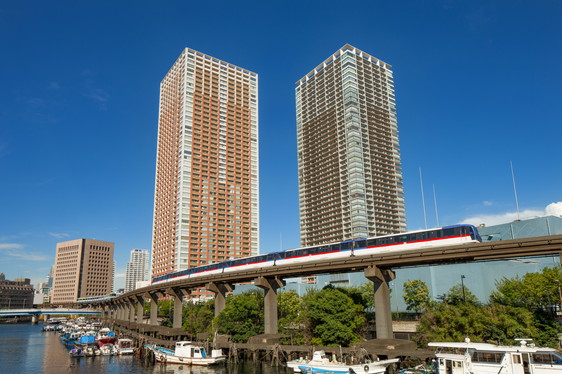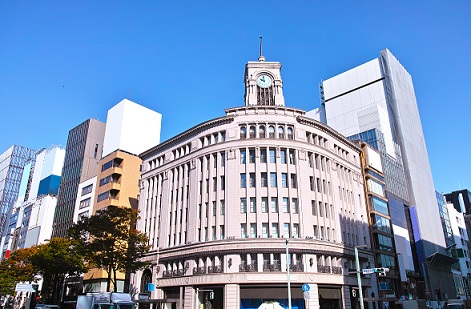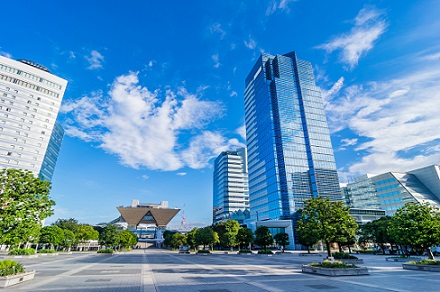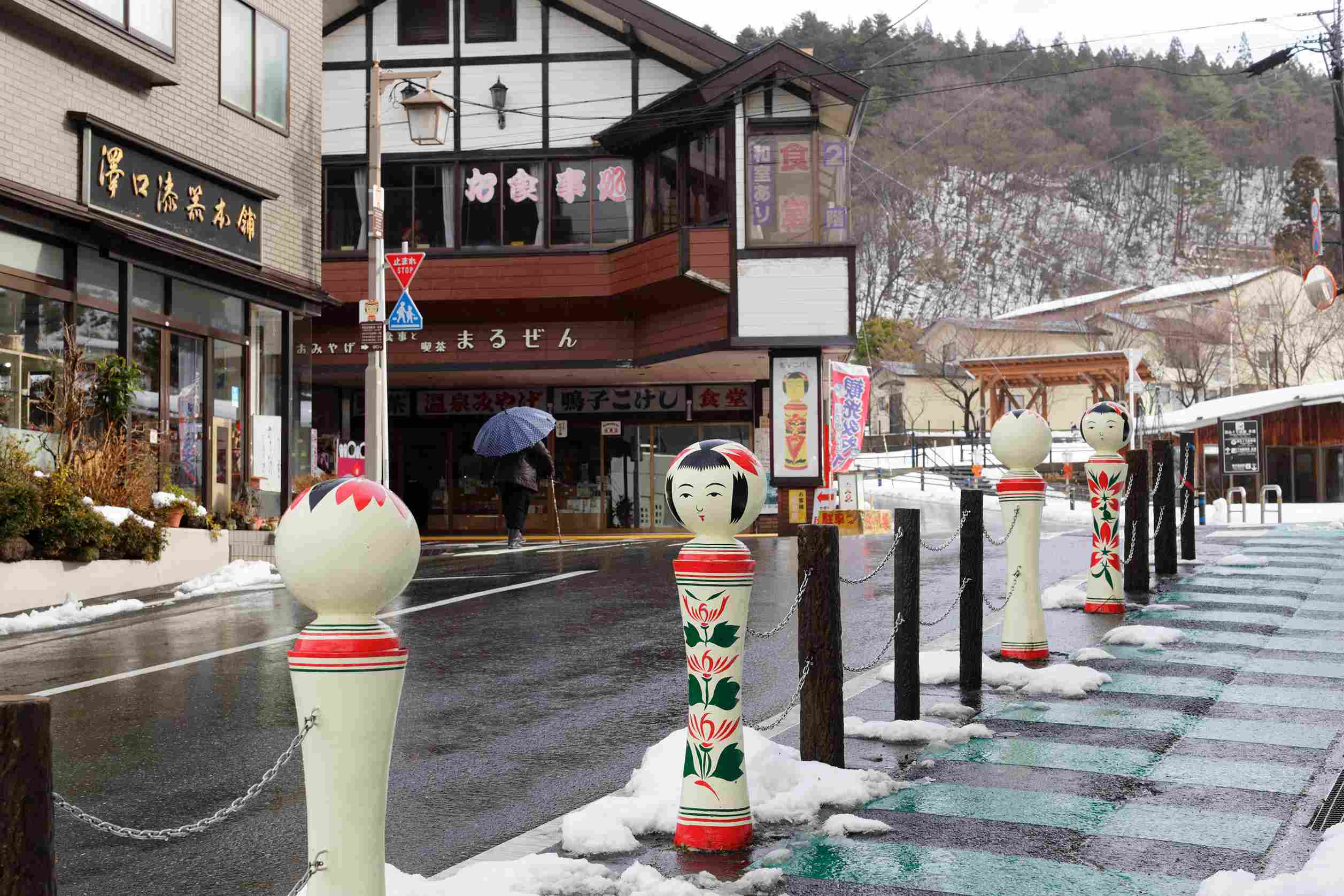Q3(Oct – Dec 2022)real GDP growth rate (2nd preliminary seasonally adjusted series values):YoY0.0%
Q3 real GDP (2nd preliminary values):139 trillion 918.2 billion JPY/0.4% YoY
The April 2023 edition of the MARE Monthly Real Estate Market Report consists of the following chapters.
1. The actual situation of the Kishida Government's "Investment in People" policy; 2. Property Market Related Information: Basic Data on a Real Economy; 3. Information on Property Market Trends: Economic Outlook; 4. Prospects for Future Property Purchases. Of the above, in section 1 I will check the actual situation regarding wage increases in large, medium and small sized enterprises.
Hopefully, this will help readers to understand the opportunities for buying and selling property.
【1. Overview of the change of the Governor of the Bank of Japan and
Last month's issue described business confidence in the private sector, with a focus on planned wage increases and the number of bankruptcies. In this issue, we review the 10 years of the Kuroda era following the retirement of former Bank of Japan Governor Kuroda on 8 April. It also provides an insight into the results of the Cabinet's Advisory Council on Economic and Fiscal Policy ('Cabinet Advisory Council'), which was held on 30 March and 18 April respectively to confirm the Government's economic policy, and its impact on the Japanese economy, including the property industry, in the years ahead.
During the 10-year term of former BOJ Governor Kuroda, the main policy was the introduction of "quantitative and qualitative monetary easing", which was summarised by increasing the balance of long-term government bonds by JPY 50 trillion per year, increasing the balance of listed investment trusts by JPY 1 trillion and implementing significant asset purchases that increased the BOJ's debt monetary base by JPY 60 trillion to JPY 70 trillion per year. As a result, the excessive appreciation of the yen was curbed, stock prices rose and corporate capital increased significantly, while capital investment did not grow dramatically, the labour participation rate fell and wage growth was poor. In addition, negative aspects of the lessons learned were that interest rates on government bonds fell sharply, which put pressure on bank profits, and the loosening of fiscal discipline caused productivity to stagnate and real wages to be pushed down. As mentioned in last month's issue, the impact of wage increases this spring was significant, but the latest real wage growth rate remains well below the rate of price growth, which was affected by external factors, down 2.9% YoY. At first glance, the current price growth rate of over 2% appears to be reaching the target of an annual "2% rise" set by former Governor Kuroda, but in reality, the increase is mainly driven by external factors such as the appreciation of resources and the rise in imported products due to the rapid depreciation of the yen. Without sufficient wage growth, a virtuous cycle in the economy will not emerge and it will be extremely difficult to achieve the price target in a stable manner, even with the continuation of quantitative and qualitative monetary easing. This 'realisation of a virtuous circle of growth and distribution' was the main theme of the last two meetings of the Cabinet Advisory Council.
The 30 March council mainly identified abnormal excess corporate savings and low labour participation as impediments to growth. The need for sustained wage increases and the importance of improving labour productivity, labour share and terms of trade for this. The need for 'smart spending', reductions in cost-effective small expenditures, curbs on social security spending and fiscal consolidation from normal times to prepare for crises, in order to realise modern supply-side economics (MSSE), in which the government plays a certain role, rather than conventional 'small government' economic policies in a difficult fiscal situation. The government has been working on a number of measures to improve the financial health of the country. The objective was to continue the policy blending between the market and the government, with the market economy and the government correcting its failures. It then calls for investment in infrastructure, childcare, education and climate protection, while avoiding excessive expansion of government debt.
At a meeting of the Cabinet Advisory Council on 18 April, new Bank of Japan Governor Ueda stated that the Bank would like to "ensure stable monetary management". At the same meeting, he also stated that a virtuous cycle between wages and prices had already started in spring 2022 and that a strategy was needed to consolidate this virtuous cycle by 2025. He further explained the need to formulate policy targets using macro indicators and KPIs and to check policy implementation in order to realise the central goal of the new capitalism: sustainable growth in terms of income. Inward FDI is very important for this, he said, and it is essential to create an environment where not only investment but also the accompanying foreign technology and excellent human resources can enter Japan, and where technology and ideas can be exchanged both domestically and internationally. The panel concluded, however, that this should be accompanied by a review of the system, including the tax system.
In the following section, the economic realities surrounding the property market are reviewed.
【2.Property Market Related Information: Basic Data on a Real Economy】
This section reviews basic real economy information.

Table 1 shows that new housing starts increased by 822 units MoM, but showed a YoY decline of 0.3% to 64,426 units, indicating a decrease. The breakdown shows that owner-occupied housing starts were 18,368 units, down 4.6% YoY, showing a decline for the 15th consecutive month, while rental housing starts were 24,692 units, up 4.7% YoY, showing an increase for the 24th consecutive month. The number of houses for sale fell by 1.8% YoY to 21,062, the first decline in three months. Owner-occupied dwellings decreased for the 14th consecutive month, with 16,694 units privately financed, down 4.7% YoY, and for the 16th consecutive month, with 1,674 units publicly financed, down 3.5% YoY, representing a decline for owner-occupied dwellings overall. For houses for rent, private funds increased by 23,088 units, or 3.9%, for the eighth consecutive month, while public funds increased by 1,604 units, or 17.7%, for the first increase in two months. Among condominiums for sale, condominiums increased for the third consecutive month with 9,705 units, up 0.2% YoY, while detached houses decreased for the fourth consecutive month with 11,202 units, down 3.3% YoY. According to data released on 31 March by Sanko Estate Co, the vacancy rate for large rental office buildings in the five central wards of Tokyo (Chiyoda, Chuo, Minato, Shinjuku and Shibuya wards) was 4.59%, up 1.5% on the previous month and rising for the second consecutive month. As with last month, this was the second consecutive month of decline, rather than a continuation of the gradual decline previously predicted by the company's research. This is said to be due to the effects of the stagnation of office relocation plans, particularly among foreign-owned companies in Japan in general, as fears of a global economic recession spread.
Table 2, New condominium for sale market trends restricted to Tokyo and the surrounding three prefectures, shows a 20.4% decrease in the number of condominiums supplied. This is the fourth consecutive month of double-digit declines and the downward trend continues.

Regarding the number of remaining units, the number of units supplied fell by 158 units to 5,452, compared with 5,610 last month. The number of units supplied fell 20.4% YoY to

(Source: Compiled by the author based on demographic data from the Tokyo, Kanagawa, Saitama and Chiba city governments / as of 22 April 2023).
466 units, the fifth consecutive month of YoY decline. The number of units supplied decreased in all regions except Saitama and Tokyo, where the contract rate was ±0% in the Tokyo metropolitan area, down 1.1% in the 23 wards, up 10.4% in Tokyo, down 12% in Kanagawa, up 1.7% in Saitama and up 6.9% in Chiba.
The average sales price and price per square metre decreased overall, while the contract rate for super high-rise properties with 20 or more floors was 76.9%, down 2.7% YoY. The first month contract rate in Tokyo and the three prefectures as a whole was 73.3%, the first time in two months that the rate has recovered to the 70% level. The average price per unit was 67.78 million JPY, down 8.6% YoY and the first decline in three months, while the price per square metre was 1.015 million JPY, the first decline in four months. The number of remaining units has decreased for two consecutive months, which can be seen as an indicator of stability in the property market.
Figure 1, Population change: for the third consecutive month, Tokyo experienced a decrease of 3,831 persons, and the population also decreased in the other three prefectures. In Kanagawa, the number of people decreased by 5,972; in Saitama, by 4,502; and in Chiba, by 6,912.February 2023 was the second consecutive month of excess out-migration in all three prefectures, and the third month in a row of excess out-migration in Tokyo. As confirmed in last month's issue, this is due to the highest number of companies relocating their headquarters or head office functions from the Tokyo metropolitan area to the regions in the past 20 years, the increasing prevalence of telework, and the increasing number of companies establishing bases outside the metropolitan area as a risk diversification measure. Combined with the anticipated expansion of the government's subsidy precision to encourage regional migration, this downward trend is expected to continue.
【3.Information on Property Market Trends: Economic Outlook】
In this section, we will check the business climate in relation to the property market. First, macro data will be reviewed.

Table 3, National Consumer Price Index, shows that the composite value decreased by 1.0% from last month to 3.3%, with the composite excluding fresh food decreasing by 1.1% to 3.1% and the composite excluding fresh food and energy increasing by 0.3% to 3.5%. As confirmed in last month's issue, the Government held a meeting of the 7th General Task Force on Prices, Wages and Living Standards and stated that it would "consider measures to curb electricity prices", which is believed to have had some effect. However, the YoY increase was the 18th consecutive month of YoY growth, and the overall increase excluding fresh food and energy was more like 0.3%, which confirms the continuation of the inflationary trend.
The following section looks at Figure 2 and the Cabinet Office Business Climate Index. The leading index rose by 1.1 points ('P') MoM, the first increase in four months; the three-month backward moving average (the high and low values obtained by comparing the figures for the month under study with the averages for November, December and January and for December, January and February) rose by 0.04 P, the first increase in six months; the seven-month backward moving average (the figures for the month under study with the The seven-month backward moving average (the high/low value calculated by comparing the monthly figure with the average of July, August, September, October, November, December and January and the average of August, September, October, November, December, January and February) fell by 0.25p, the ninth consecutive month of decline. The coincident index rose by 2.8 P MoM, the first increase in six months; the three-month backward moving average fell by 0.07 P, the fifth consecutive monthly decline; the seven-month backward moving average fell by 0.06 P, the second consecutive monthly decline; the three-month backward moving average fell by 1.07 P, the fifth consecutive monthly decline; the seven-month backward moving average fell by 0.06 P, the second consecutive monthly decline; the three-month backward moving average fell by 1.07 P, the fifth consecutive monthly decline; the three-month backward moving average fell by 0.07 P, the fifth consecutive monthly decline. The lagging index fell 1.4p MoM, the first decline in seven months; the three-month backward moving average fell 0.27p, the first decline in 15 months; the seven-month backward moving average rose 0.22p, the 12th consecutive monthly rise; and the seven-month forward moving average fell 0.22p, the 12th consecutive monthly rise.

The leading index increased for the first time in four months, while the coincident and lagging indexes showed a decrease respectively. The following section provides breakdown information showing a downward trend compared to the previous month. In the leading index, the number of new job openings fell by 0.08%, new housing starts fell by 0.12% and money stocks also fell by 0.07%. Meanwhile, the index of inventories of final demand goods rose by 0.06%, the index of inventories of essential industrial goods rose by 0.74%, real machinery orders (manufacturing) rose by 0.33%, the consumer attitude index rose by 0.04%, the Nikkei commodity index rose by 0.02%, the TSE stock index rose by 0.17% and the outlook for small business sales rose by 0.28%. The index showed an increase of 0.28%. The only coincident index to show a decrease was the effective job vacancy rate, which fell by 0.11%. The production index (mining) rose by 0.53%, the industrial production goods shipments index rose by 0.54%, the durable consumer goods shipments index rose by 0.54%, the labour input index rose by 0.16%, the investment materials shipments index (excluding transport machinery) rose by 0.24%, commercial sales (retail trade) rose by 0.23%, commercial sales (wholesale trade) rose by 0.08%. up, operating profit was unchanged at 0.00% and the export volume index showed an increase of 0.24%. The lagging indices showed a 0.05% decrease in household consumption expenditure, a 0.01% decrease in corporate tax revenue, a 0.33% decrease in total unemployment rate, a 0.07% decrease in regular payrolls and a 0.49% decrease in the consumer price index. Meanwhile, the tertiary activity index increased by 0.15%, the permanent employment index increased by 0.02% and the inventories of final demand goods index showed an increase of 0.44%.

As a general comment, the Cabinet Office described business climate as 'at a standstill'. This is the third consecutive month that this expression has been used, suggesting that the economy may have entered a recessionary phase, so caution should continue to be taken in future economic phases.
Figure 3 shows the number of visitors to Japan up to February this year. According to data released by the Japan National Tourist Organisation on 15 March 2023, the number of visitors to Japan showed a decrease compared to the previous month, mainly due to February being the off-peak period before the cherry blossom season and a decrease in visitors to Japan, especially from East Asia, as a reaction to the Chinese New Year in the previous month. However, other countries and regions showed a solid recovery, with the level of 56.6% compared to the same month in 2019, showing more recovery than in the previous month. The Government of Japan stated that it will continue to strengthen its efforts to promote the attraction of visitors to local regions and the growth of consumption through the active dissemination of sustainable tourism information and the proactive promotion of activities to attract conference, study tours, international meetings and event venues. As a result of the above, a steady increase in the number of visitors to the country is expected in the future.
【4.Prospects for Future Property Purchases】
Looking at exchange rate trends, the yen was at 134.05 yen as of 28 April this year (129.09 yen the same day last year), showing a stronger trend than in the past and a depreciation of about 3.8% compared to the same day last year. The Bank of Japan's outlook for the future suggests that it will take time for prices to rise to their normal pace. It is also reasonable to expect that, as noted by the Cabinet Office in its business climate index, price rises will settle down for the time being as the economy enters a slowdown phase. In response, the general view in the market is that monetary easing will continue. Moreover, even if long-term interest rates in Japan were to rise moderately to 1%, as widely predicted in the market, the impact on the property market would be limited, as the difference between yields on property and those on real estate would be sufficient. In comparison with some overseas markets, where both interest rates and property risk premiums are rising, the Japanese property market remains an attractive investment market. In addition to these factors, the ongoing depreciation of the yen, which is at its weakest in 30 years, makes now an even better time to buy property with foreign assets.











